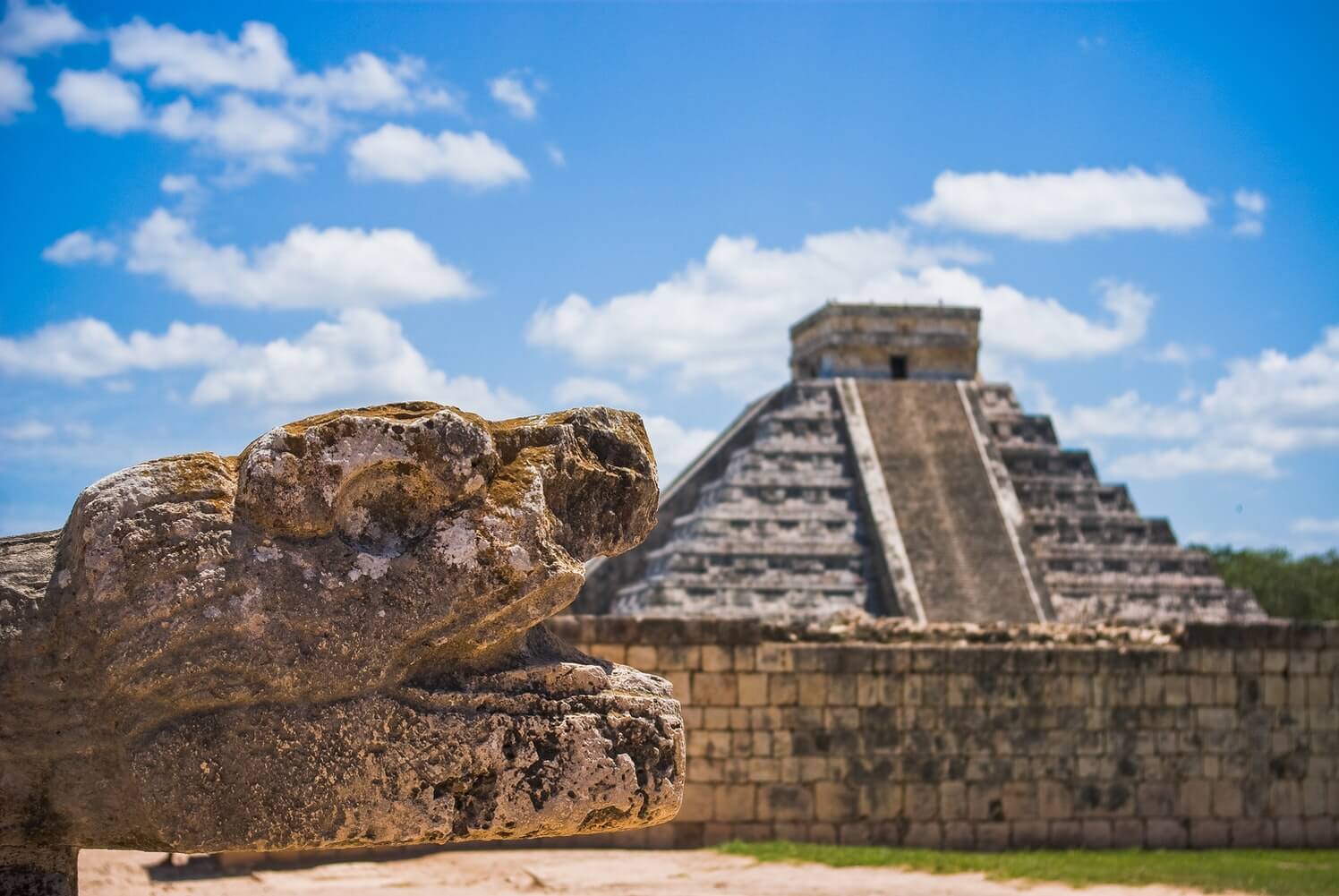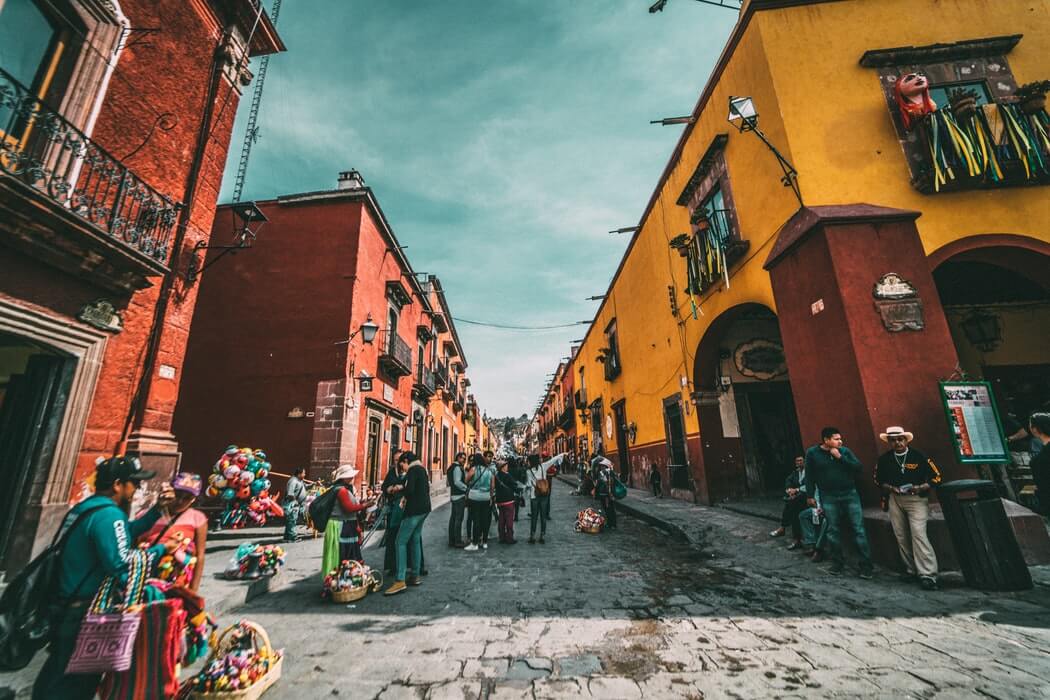For almost 80 years, Canada and Mexico have built a strong relationship, working closely with the United States to boost security, competitiveness, and environmental sustainability in North America.
Canada is a significant source of visitors to Mexico, with over 1.8 million Canadians, many of whom, including retirees, choose to invest in Mexican property for longer stays. A key reason for moving to Mexico from Canada is the lower cost of living, along with the appeal of warm weather, beautiful beaches, culture, and tasty food. Read on to find out what to do before moving to “Mexico Lindo”.
Moving to Mexico: Everything to know and do
What to know before your move from Canada to Mexico
1. First steps before moving to Mexico
Visa requirements
If you are moving from Canada to Mexico, you must present a valid passport and a tourist card that can demonstrate the purpose of your trip. If you are initially traveling to explore the city before your move, it’s essential to know that the maximum length of stay is 180 days, although this depends on the discretion of the immigration official.
If your plan involves staying in Mexico for more than six months, you have two primary visa options: the Temporary Resident Visa and the Permanent Resident Visa.
The Temporary Resident Visa allows you to stay for extended periods, ranging from six months (180 days) up to four years. On the other hand, the Permanent Resident Visa is necessary if you intend to live in Mexico on a permanent basis. If you plan to work in Mexico, you will require a work visa.
After residing in Mexico as a temporary resident for four consecutive years, you can change your status to permanent resident by fulfilling certain requirements outlined by the Government of Mexico.
Here’s what each type of visa allows you to do:
- Allows you to determine whether Mexico is the right place for you.
- If you decide to stay beyond the first year, you can renew your visa for an additional three years.
- Enables you to enter and exit Mexico with ease.
- Grants you the ability to work in Mexico without needing additional permits.
Taking care of your visa requirements is a crucial step before making the move from Canada to Mexico.
Finding a job
If you have secured a job before arriving in Mexico, you can contact your employer to inform them of your arrival. They will guide you through the next necessary steps. Another option is to consider freelancing if your work can be done remotely while living in Mexico.
Finding a job as a foreigner can be a rewarding experience, but it requires careful planning and research. First, you need to obtain a work visa. After that, you can apply for jobs through online job search platforms like LinkedIn, Indeed, Glassdoor, and Computrabajo. You can also seek assistance from recruitment agencies or expand your network. Don’t forget that learning Spanish can significantly enhance your job prospects.
Getting there
If you’re contemplating a move to Mexico, it’s crucial to explore your transportation options. You can access the country either by air or by land, the two most common choices.
Flying is the most convenient and quickest method, and it’s also the most widely used. Mexico boasts major international airports, including Mexico City (Benito Juárez International Airport), Cancun (Cancun International Airport), and Guadalajara (Guadalajara International Airport.
Alternatively, you can consider traveling by land, although this entails either using an international moving company or driving yourself. In this case, it’s essential to factor in distance, border crossings, and the required documentation.
What should I look for in an International Moving Company?
If you’re relocating with most of your personal belongings, especially with your family, contacting an international moving company is a necessity. However, exercising caution when selecting one is crucial, and there are several key factors to take into account. This includes:
- Making sure that the company is licensed/certified and has a reputable professional history. Look for online reviews.
- Inquire about damage insurance upfront to prevent your personal belongings from being returned damaged with the movers disclaiming responsibility.
- Verify their reputation for providing fast and dependable service to ensure the timely delivery of your belongings.
- Determine their mode of transportation. When moving from Canada to Mexico, consider having your belongings sent by air for cost-efficiency and speed.
Car shipping to Mexico?
Shipping your car to Mexico is a practical choice, given the ease of finding spare parts. Mexico’s proximity to the USA allows for convenient spare parts delivery if necessary. However, importing your car to Mexico does require a customs agent to facilitate the process, including payment of all fees and taxes. An economical alternative is to sell your car and use the proceeds to purchase a vehicle in Mexico, often available at a much more affordable price.
Must dos before your arrival
Moving to Mexico can be both exciting and challenging. Being aware of these things beforehand will better prepare you for your new life
- Conduct research to select the ideal Mexican cities for your expat lifestyle. Consider cities like Merida, Querétaro, CDMX, Cancun, and Monterrey to meet your needs.
- Contact the Canadian Revenue Agency (CRA) to notify them of your departure. The CRA will classify your residency as Factual Resident, Deemed Resident, Non-Resident, or Deemed Non-Resident, impacting your tax obligations.
- Organize your documents for visa application. You’ll need to demonstrate your financial capability for a six-month stay in Mexico. Include your Canadian Passport, Birth Certificate, and an RCMP certificate showing a clean record.
- Secure the right visa for living in Mexico, whether temporary or permanent, based on your situation.
- Arrange your housing in advance to avoid last-minute stress. Research neighborhoods and housing options to suit your needs.
- Consider learning basic Spanish or taking language courses to help daily communication and integration.
2. Upon your arrival in Mexico
Must dos right upon your arrival
- Contact the Canadian Embassy: Register with the embassy for tracking and assistance, which can be valuable in various situations.
- Find a School: Locate a nearby private school for your children due to potential limitations in Mexico’s public education system.
- Contact your Employer: Inform your employer of your arrival and receive guidance on necessary next steps.
- Get your CURP Card: Obtain a CURP card from INM, serving as your Mexican identification, similar to a Social Security Number, required for various government services.
- Get Driving License: Consider obtaining a Mexican driver’s license to simplify driving in Mexico; visit SEMOV offices with specific documentation.
- Identify Healthcare Providers: Explore healthcare options, including government programs like the IMMS and private providers, for your medical needs in Mexico.
Healthcare
Expats can get healthcare under the IMMS programs which are offered by the government in the form of public healthcare. But there are a number of private healthcare providers which expats usually opt for.
Setting up your cell phone
In Mexico, several companies offer mobile phone services, with the three largest operators being Telcel, Movistar, and AT&T. If you’re unsure which one to choose, you can begin by identifying the one that best suits your basic needs, whether it’s for internet, messaging, or calls.
Telcel is renowned for offering the most cost-effective phone plans in Mexico and holds a 60% market share, making it the leader in the mobile phone market.
Getting a driver’s license
Your foreign Canadian driver’s license will be accepted in Mexico, but it is recommended to obtain a Mexican drivers license to simplify the process of driving in the country. To apply, you will need to visit one of the 14 SEMOV offices with your valid passport, CURP, visa card, valid driver’s license, proof of address, and documentation. The license is reasonably priced and remains valid for four years.
Note that to drive in Mexico, you must have car or auto insurance with basic coverage for Civil Liability; other than that, there are no specific or essential insurance requirements. However, you can choose to purchase life insurance if desired, and you can contact private insurance organizations for this purpose.
Setting up a bank account
Upon arriving in Mexico, it’s important to prioritize setting up a bank account to address your security and financial needs. You have various options, including major banks like BBVA, Santander, Banorte, Banamex, Banco Inbursa, Scotiabank, and HSBC, which have branches across the cities for your convenience.
Additionally, some banks may allow you to open an account online before your arrival in Mexico. If you need to make international money transfers, it’s advisable to be mindful of associated fees and compare rates offered by different financial institutions.
3. Best places to live in Mexico

Mexico is a sensational country featuring natural beauty and welcoming people. In addition to its captivating landscapes and beautiful beaches, there are regions that provide an exceptional quality of life, ensuring your security and happiness. Here’s a list of the best places to call home in Mexico:
|
Cities |
Characteristics |
|
Merida, Yucatán |
One of Mexico and Latin America’s safest cities, close to beautiful beaches in Cancun. |
|
San Pedro Garza Garcia, Nuevo León |
A secure city in Monterrey’s metropolitan area, offering modern amenities and a variety of dining, culture, and parks. |
|
Saltillo, Coahuila |
Known for economic growth and rich cultural traditions, with a mild climate and low crime rates. |
|
Monterrey, Nuevo León |
Dynamic blend of economic opportunity, rich culture, and vibrant lifestyle. |
|
La Paz, Baja California Sur |
A coastal gem with numerous recreational opportunities, including its white sandy beaches, enjoying a year-round warm climate with an average of 30 °C. |
Setting up home services
To set up your home services in Mexico, here’s what you need to know:
- Electricity: Contact CEF, the state-owned electricity supplier. Ensure your house is within 35 meters of an electrical post.
- Gas: Private companies manage gas supply. Reach out to your supplier or flag down roaming gas trucks.
- Water: Water services vary between government and private companies. In remote areas, there are wells and rainwater units. Consider hiring a private water supplier for drinking water.
- Documentation: For all utilities, have your CURP card, proof of residence, address, passport, or relevant identification documents like utility bills or bank statements.
- Television: Mexico uses the ATSC TV standard, which isn’t compatible with DVB-T, ISDB-T, or DTMB. Ensure your TV matches the system.
- Internet: Mexico has a wide range of service providers offering bundled packages, including landline, internet, TV, and mobile services. Main providers include Telmex, Movistar, At&T, Maxcom, and IZZI.
Should you rent or buy?
Mexico boasts a significantly lower cost of living compared to Canada, making it an appealing choice. Whether you’re looking at groceries, housing, transportation, leisure, personal care, or clothing, Mexico offers substantial savings.
Thanks to Mexico’s favorable cost of living, finding an apartment or a home, whether for renting or buying, is a straightforward process. You can easily begin by contacting a local real estate agent in the areas mentioned earlier. According to Numbeo, rent prices in Canada are 143.8% higher than in Mexico.
Discovering your new place to live is a breeze, whether through word of mouth, newspaper listings, or online resources.
4. Cost of living in Mexico
|
Category |
Monthly cost |
|
1 bed apt rent outside city center |
$462.67 |
|
Groceries Numbeo’s grocery list ($56.89 multiplied by 4) |
$227.56 |
|
Utilities Electricity, heating, cooling, water, garbage |
$81.82 |
|
Internet with 60 Mbps |
$38.87 |
|
Transit pass |
$27.02 |
|
Entertainment Meal, taxi, movie |
$39.78 |
|
Gym membership |
$44.43 |
|
Total |
$922.15 |
What are the benefits of living in Mexico?
Becoming a permanent resident not only provides you with the freedom to come and go from Mexico as you please and the opportunity to seek employment. But it can also enhance your quality of life by affording you a more affordable cost of living.
However, it’s important to remember that you are entering a new country with a distinct culture and traditions. So remain open to this new experience and embrace the peace of mind it can offer while living in one of the beautiful Mexican cities.
Where can you buy groceries in Mexico?
You’ll have no trouble finding groceries in Mexico, with major American supermarkets like Walmart readily available. Additionally, you’ll discover numerous small neighborhood shops, local vendors, and markets where you can conveniently purchase your groceries.
What to expect from your new life in Mexico?
Living in Mexico won’t be the same as Canada, but it promises to be an unforgettable experience. Mexico offers a diverse and rich culture, stunning natural beauty, delicious cuisine, and welcoming locals. It’s undoubtedly a worthwhile place to call home, and if you choose one of the locations mentioned earlier, it may feel like living in paradise.
5. The weather in Mexico
In Mexico, the climate varies significantly, and there are seven major climate types identified, with the warm and dry climates being the most extensive and the temperate and cold climates being less common. So you can mainly enjoy warm and sunny conditions the whole year in coastal areas, even in the winter months in places such as Cancun, Puerto Vallarta, Acapulco, and Playa del Carmen.
- Spring: March to June.
- Summer: June to September.
- Autumn: September to December.
- Winter: December to March.
6. What to do as a local in Mexico
As a local in Mexico, a world of experiences awaits you. Indulge in the diverse culinary delights, such as mole, pozole, or street tacos. Don’t forget to savor the vibrant street food scene. Immerse yourself in the lively festivals and celebrations, such as Dia de los Muertos (Day of the Dead) in October.
Explore historical treasures like Chichen Itza and Teotihuacan, and embrace outdoor adventures like surfing and snorkeling while enjoying stunning landscapes. Experiencing the local way of life and participating in these activities will allow you to fully immerse yourself in Mexico’s rich culture.
7. Fun facts about Mexico
- Mexico is believed to be the birthplace of chocolate. The ancient Mayans and Aztecs made a beverage from cacao beans, which eventually led to the creation of the beloved chocolate!
- Mexico boasts the second-highest number of UNESCO World Heritage Sites in the world, with locations like Teotihuacan.
- Mexico is home to the world’s smallest volcano, Cuexcomate, located in the city of Puebla. It stands at just 13 meters.
- Mexico is home to the world’s largest underwater museum, Museo Subacuático de Arte (MUSA), located off the coast of Cancún and Isla Mujeres.
Conclusion
Embarking on a journey to Mexico is an opportunity to immerse yourself in a rich mix of culture, history, and natural beauty. It’s a land of vibrant traditions and diverse landscapes, where you can experience the best of both urban living and the serenity of nature.
As you prepare to make the move to Mexico, consider researching the best long distance moving companies to ensure a smooth and stress-free transition. Your choice of movers will play a crucial role in making your Mexican adventure an enjoyable one.






